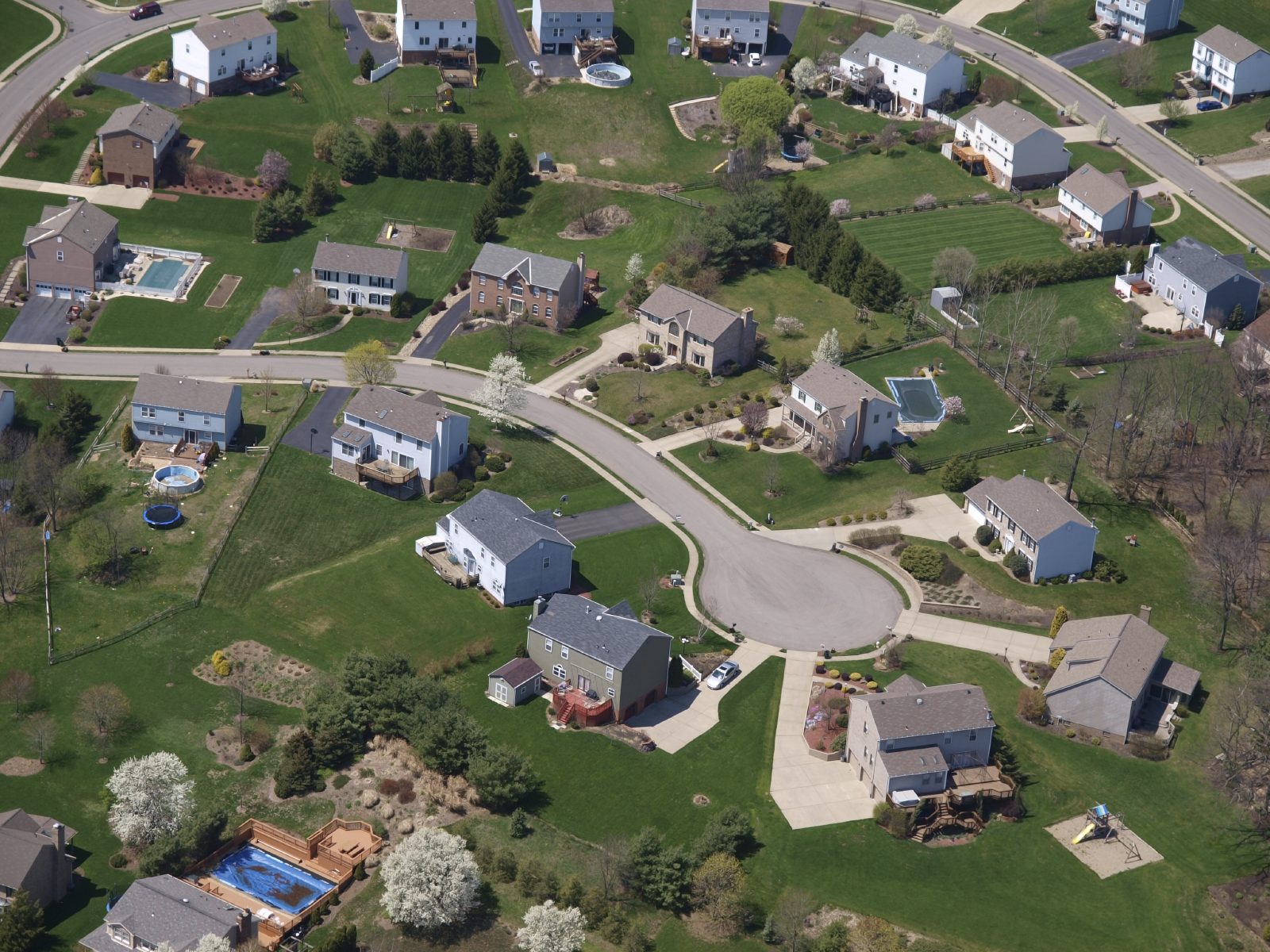The Quest for Community
Larry Lyon, PhD and Robyn Driskell, PhD
Critiques of modern societies often include the loss of community due to increasingly weak connections with local places and changing modes of social interactions. Sociologists believe that Western societies lose community as they modernize, and the quantity and quality of community is reduced when a society becomes more urban and more industrial. Assessments of modern and even postmodern societies include the "decline in" or "loss of" community.
While the nature of community decline remains debatable, current research suggests that consumers still seek the lost community. Consequently, there is an opportunity for real estate professionals to explore the needs and wants of their home buying clients to satisfy their ideal level of community. By understanding why place still matters and the different dimensions of attachment and rootedness relative to community, real estate professionals can add significant value for clients navigating the home buying process.
Are We Losing Community?

Most sociologists accept a working definition of community that includes a specific geographic area, an identification by the residents with that area, and social interaction among the residents. The lost community thesis often argues that what was lost was a village, a small town, or urban neighborhood, a local place where one was born, raised, and died - a local place with inherently intimate, holistic relationships. This has important implications for real estate professionals: the natural loss of connection must first be understood, then supplemented in the home buying process.
When sociologists speak of the "loss" of community, there are at least two distinct meanings: psychological and territorial (Bateman Driskell and Lyon 2002). Psychological focuses on the social interaction of the community and analyzes the alienation from the loss of community. Territorial focuses on the specific area and the diminishing identification with place. Both meanings share the same primary source for the loss of community: the urban society - and excessive individualism, alienation, and a resultant lower quality of life.
So, does place still matter? Not as much as it did before the industrial information revolutions, certainly, but residents (especially long-term residents) still identify, to a degree, with their territorial communities. The place one lives also matters considerably for differences in life styles and economic opportunities. Wellman's (1979) "community saved" argument maintains that neighborhoods have survived despite urbanization, industrialization, and technological advances. Residents still have a sense of local ties for social support and sociability.
More research shows that communities still exist in which residents identify with an area, known as the neighborhood and personal interactions may still be examined within the boundaries of the neighborhood (Chaskin 1997). Although individuals may define the boundaries of the neighborhood differently, residents who define the neighborhood in terms of network interactions and personal relationships tend to identify with the geographic unit.
Understand and Encourage Attachment
A resident may not work near her home, or go to school or church near her residence, yet she still identifies with the place that she lives. Attachment to place is multi-dimensional. People are attached to places for different reasons - for the social relationships and friendships, or even the structural facilities available near their home.
While status and personal network characteristics may influence the level of involvement and attachment to the neighborhood, whenever social integration can be enhanced, it is beneficial to the resident as well as the neighborhood. Neighborhoods remain the spatial focus of meaningful social interaction, important political organization, and significant psychological attachment. Regardless of the type of attachment, the place and the neighborhood matters.
Knowing that the potential for attachment to one's community can be an important part of the home-buying decision, real estate professionals can leverage the different dimensions of attachment to help buyers make decisions on prospective neighborhoods. Agents might consider adding a short survey component to the front-end of client interactions to better understand which dimensions are most important to her (e.g., "Rank the following from most to least important in your home-buying decision. I want a home that is: close to friends; close to family; has access to a recreation facility;" etc.).
Understanding the dimensions that are most important to the client can help the agent satisfy his client's needs most effectively, and can provide a framework to aid in the decision-making process among multiple properties.
Help Your Clients Feel "Rooted," Increase Community Satisfaction
Residents involved or engaged in neighborhood activities report higher levels of community satisfaction. Community satisfaction can be encouraged simply by knowing neighbors (i.e., social networks) or volunteering for a cause that benefits the neighborhood. Residents who are more "rooted in place" often find reasons to improve/help the neighborhood, as well, and thus have reasons to stay. In fact, the longer length of time as a resident and home owner impacts the neighborhood in a positive manner (e.g., improving crime rates and increasing property values).  Volunteering and membership in neighborhood associations also increases attachment to and satisfaction with the neighborhood.
Volunteering and membership in neighborhood associations also increases attachment to and satisfaction with the neighborhood.
Real estate professionals can find prospective homes that will encourage clients to feel "rooted" in the community. One way that agents can assess the potential for rootedness/connectivity in a neighborhood is to develop a neighborhood profile for the properties being shown to clients: Who lives here? How long have they lived in the neighborhood? How many families have young kids? What type of neighborhood activities take place (e.g., 4th of July Block Party, annual community garage sale, etc.)? What is the average value per square foot in the neighborhood? Is there a neighborhood association?
Each of these components of the neighborhood (which can be invisible to the casual observer) may help clients better understand the potential for feeling connected to and satisfied with the community. Providing this (or a similar) community profile can also be an important differentiator for your real estate services relative to other agents in your area.
Conclusion
Many sociologists have discussed the impact of mass society in America, which tends to make our communities more and more similar. With the prevalence of instant media, news trends, fashion, and the influence of online venues, it is thought that physical community is becoming irrelevant.
As real estate professionals know, though, the neighborhood still matters. Clients have very specific preferences about neighborhoods for myriad reasons. Communities still exist most readily, most naturally, and most often when people feel attachment and rooted with place (i.e., the neighborhood, the school, the church, or the workplace).
Real estate professionals have an important opportunity to leverage the knowledge of attachment and rootedness to add value to the home buying process. How can you make your clients feel more attached to and rooted in the communities and homes you present in your buying process?
. . . . . . . . . . . . . . . . . . .
References
Bateman Driskell, Robyn and Larry Lyon (2002), "Are Virtual Communities True Communities? Examining the Environments and Elements of Community," City and Community, 1(4): 373-90.
Bernard, Jessie (1973), The Sociology of Community, Glenview, IL: Scott Foresman.
Chaskin, R.J. (1997), "Perspectives on Neighborhood and Community: A Review of the Literature," Social Service Review (Dec), 521-45.
Lyon, Larry and Robyn Bateman Driskell (2012), "The Quest for Community," excerpt from Community in Urban Society, (Long Grove, IL: Waveland Press, Inc., (93-106).
Wellman, Barry (1979) "The Community Question: The Intimate Network of East Yorkers," American Journal of Sociology 84 (March): 1201-31.
. . . . . . . . . . . . . . . . . . .
Larry Lyon, PhD
Dean of the Graduate School, Baylor University
Dr. Larry Lyon is a 1971 Baylor graduate who returned to Baylor's Sociology Department after earning his doctorate from the University of Texas at Austin in 1975. He is currently a Professor of Sociology and Dean of the Graduate School. Dean Lyon has served as Director of the Center for Community Research and Development, Chair of the Baylor Faculty Senate, Director of the Baylor 1994-96 Self-Study, President of the Southwestern Sociological Association, President of the Southwestern Social Science Association, and President of the Association of Texas Graduate Schools.
Robyn Driskell, PhD
Professor of Sociology, Divisional Dean, College of Arts and Sciences, Baylor University
Dr. Robyn Driskell is a professor of sociology and the Divisional Dean in the College of Arts and Sciences. After earning her doctorate from Texas A&M University, Dr. Driskell came to Baylor in 1997. She has taught both undergraduate and several graduate courses including social demography, community and demographic methods. Her areas of interest include demography, community sociology, race and ethnic relations, and Latino studies. A Baylor alumnae herself, she returned to teach here because of the university's mission as well as the strong emphasis on mentoring and teaching students.